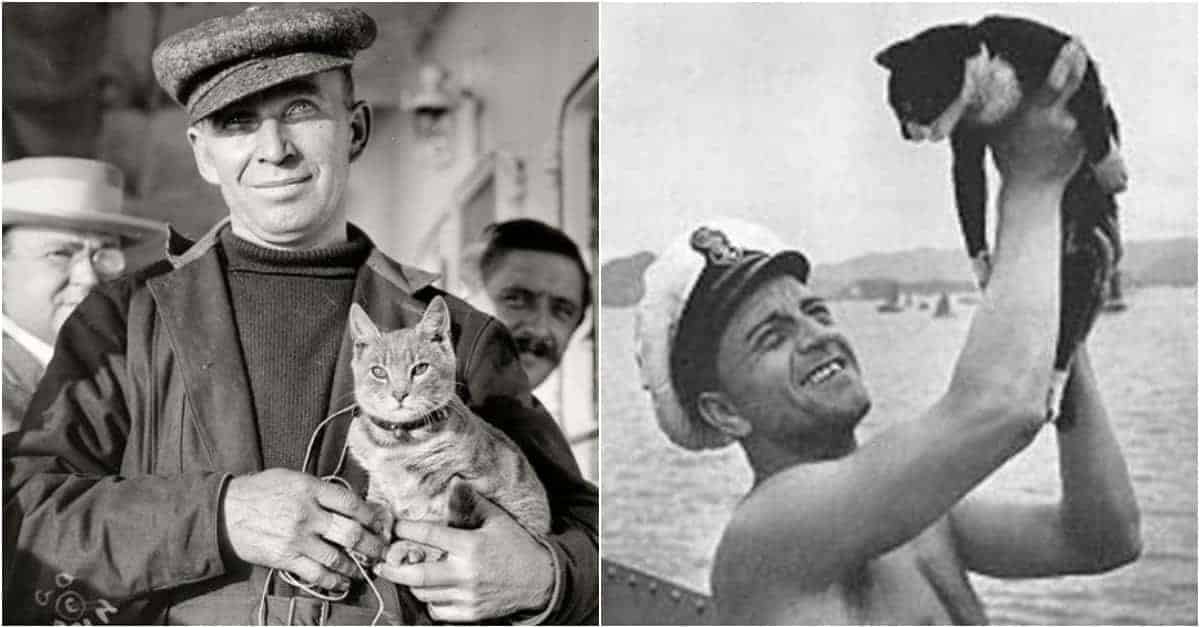A ship is a natural environment for cats. Countless thousands of nooks and crannies, hidden spaces, dark passages inaccessible to humans, and warm sanctuaries in which to rest make up the bowels of a ship. While some spaces are loud and brightly lit, others are shadowy and seldom visited by the humans making up the ship’s crew.
In bygone days and still on many commercial vessels today, rodents are present in the hold and other spaces, providing natural prey for cats. Rodents were one reason for the prevalence of cats aboard nearly all ships for centuries. Companionship for officers and crew were another.
In the days of sail, most ships put to sea with livestock aboard, hogs and sheep to provide fresh meat, and chickens to provide fresh eggs and another source of meat. Crew members often adopted some animals for a time – particularly roosters, who were given names proclaiming fighting prowess – but it was difficult to become too attached to something which in the near future may be a meal. Ship’s cats provided companionship and served as a good luck charm for their ship and crew.
Ship cats are no longer legal in either the British or American Navy, and health regulations prohibit them on most commercial ships. But many ship’s cats have been memorialized around the world, noted for their service and contributions to the history of the sea. Here are the stories of a few notable ship’s cats.

Unsinkable Sam
When Germany’s massive new battleship Bismarck put to sea for its first raiding voyage on Allied shipping in May 1941, more than 2,000 men were aboard. There was also at least one cat, brought aboard by its young sailor/owner for a voyage which would prove to be both short and singularly violent.
On the morning of May 24, Bismarck engaged two British warships, the new battleship Prince of Wales and the battlecruiser Hood, long the most powerful warship in England’s arsenal. After a short engagement, Hood was blown up by a salvo from Bismarck’s guns (some claim it was Bismarck’s consort, the cruiser Prinz Eugen, which fired the fatal shots). Prince of Wales retreated and the damaged Bismarck steamed onward.
Infuriated and dismayed at the loss of the pride of the British Navy, and concerned over the damage Bismarck could inflict if loose in the Atlantic, the Royal Navy sent every available ship in pursuit of the German battleship. On the morning of May 27, after several air and surface harassing attacks on Bismarck, a task force of battleships and cruisers caught the enemy and sank her with guns and torpedoes.
It is unknown how many of Bismarck’s crew survived the shelling which the ship endured – it was ferocious – because many of the German crew were left in the water when the British ships were forced to leave the scene due to warnings of U-Boats in the area. A little over 100 German sailors were rescued by the British ships before leaving the area.
Later that morning the crew of HMS Cossack, a destroyer which had harassed the Bismarck before the final battle, spotted wreckage in the area near where the sinking had occurred. Among the wreckage on a piece of broken wooden framing was a black and white cat, coated with oil. The crew of the Cossack, which was homeward bound for refueling and replenishment, took the cat aboard. Believing that the animal had survived the sinking of the German battleship they gave it the German name Oskar and adopted it as a new ship’s cat in Cossack.

